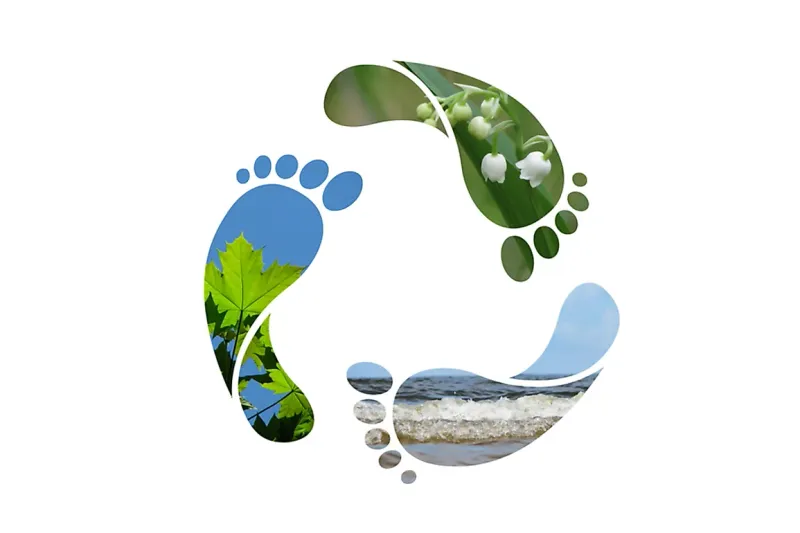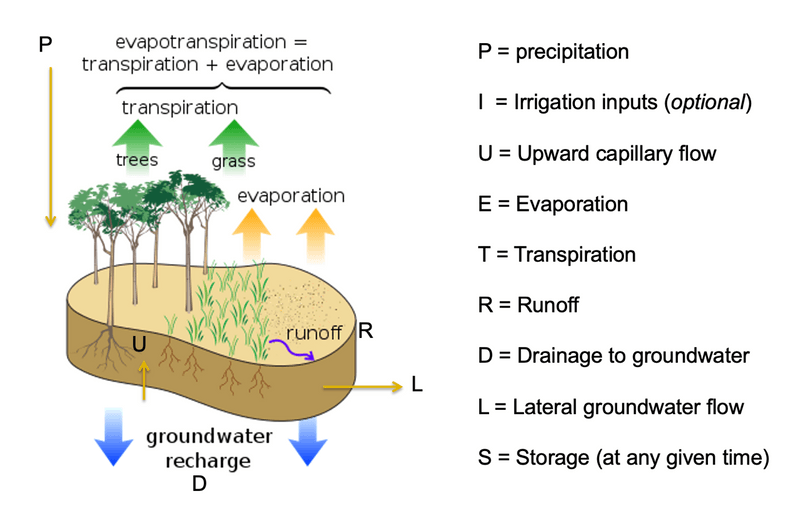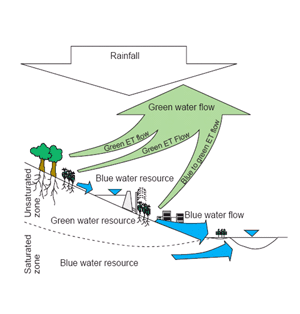A Comprehensive Guide to Water Balance Estimation and Water Footprint Analysis
Contents
Demystifying Water Management
The world's water resources face a multitude of challenges, including the ever-growing pressures of climate change, population increase, and unsustainable consumption patterns. In this complex and dynamic environment, understanding the intricate relationship between water use and availability becomes paramount for effective water management.
Two key concepts emerge as invaluable tools in this endeavour: water balance estimation and water footprint analysis. This comprehensive guide delves into these essential tools, empowering individuals, communities, and organizations to navigate the complexities of water management and contribute to a more sustainable future.

Unveiling the Secrets of Water Balance Estimation:
Mastering the Equation:
- Grasping the Fundamentals: At the core of water balance estimation lies the fundamental equation (P = Q + E ± ∆S). This equation meticulously accounts for the various components influencing water flow within a defined area and timeframe. Precipitation (P) represents the incoming water, while runoff (Q) and evaporation (E) represent the outgoing water. The change in storage (∆S) reflects the difference between these inflows and outflows, accounting for water that is either accumulated or depleted within the system (e.g., in soil, aquifers, or reservoirs).
- Differentiating the Colors: For a comprehensive analysis, it is crucial to recognize the distinction between "blue water" and "green water." Blue water refers to surface and groundwater resources readily available for human consumption, irrigation, and industrial use. Green water, on the other hand, represents the water stored within the soil and ultimately evaporated into the atmosphere. Understanding this distinction allows for a more nuanced comprehension of water availability and utilization within a specific ecosystem.

Crafting a Focussed Approach:
- Identifying Stakeholders: Before embarking on your water balance estimation journey, it is essential to identify the stakeholders involved and understand their specific needs and interests. This initial step allows you to tailor the study's scope and scale to address their unique information requirements. By focusing on relevant components and employing appropriate scales, you ensure the study's relevance and effectiveness in addressing specific water management challenges.
- Defining Boundaries: Establishing clear spatial and temporal boundaries for your analysis is crucial for creating a manageable and focused study. Defining the specific geographic area and timeframe of interest allows you to gather relevant data and conduct a thorough yet efficient analysis, ultimately yielding valuable insights into water availability and utilization within the designated parameters.
Acquiring information and embracing ambiguity
- Accurate water balance estimates require high-quality data. Gather comprehensive, closely watched data on each and every element of the water balance equation.
- Acknowledge uncertainties in data collection and hydrological processes in order to guarantee pinpoint precision.
- Collection of data from a wide range of sources of information, such as meteorological stations, geological surveys, and hydrological monitoring networks overall. A number of factors, such as measurement errors, constrained data networks, and the intrinsic additional complexity of natural systems as a whole can lead to these uncertainties. Conducting sensitivity analysis allows you to understand how these uncertainties might influence your water balance estimates, providing a more nuanced and realistic picture of the potential variations in water availability.
- Leveraging Technology: For intricate analyses involving complex water systems or large geographic areas, consider utilizing advanced tools like the WEAP (Water Evaluation And Planning) Tool. These sophisticated software programs can facilitate in-depth water balance studies, enabling detailed scenario planning and exploration of various water management strategies, ultimately supporting informed decision-making.
Exposing the Water Footprint: Evaluation of Our Influence
Breaking Down the Footprint:
- The conceptualization: The water footprint concept serves as a useful measure for fully understanding the overall amount of freshwater utilized in the manufacturing and distribution of goods and services over the course of every phase of their life cycle. It is made up of three distinct parts:
- Green Water Footprint: This element shows how much precipitation-related water is held in the soil before evaporating and dispersing into the atmosphere. It is applicable in particular to products associated with the agricultural sector, horticulture, and forestry.
- Blue Water Footprint: This element shows the quantity of both surface and ground water utilized and not replenished in the original water body. This encompasses water used for household, industrial, and irrigation uses.
- Grey Water Footprint: This factor takes into consideration the amount of fresh water needed to absorb pollutants produced during production, thereby diluting them to comply with water quality regulations.
Finding Your Footprint:
Assessing Consumption: Careful examination of water use and pollution levels along the whole production chain is necessary to ascertain the water footprint of a company, a product, or even a whole country. Data on water usage at different stages, such as irrigation techniques, industrial processes, and household consumption patterns, must be gathered and analyzed for this. You can obtain important insights into the total water footprint connected to the product, business, or country that is being assessed by putting these factors into numerical form.

Beyond Numbers: Understanding the Factors and Taking Action
Identifying the Influencers:
Consumption Habits: Our consumption patterns significantly influence our water footprint. By making conscious choices, we can contribute to a more sustainable water future. Consider reducing shower time, utilizing water-efficient appliances, opting for sustainable food options like plant-based proteins, and supporting local agriculture that implements water-saving practices.
Climate and Agriculture: Climatic factors such as temperature and precipitation levels play a critical role in water availability and utilization. Additionally, agricultural practices significantly impact water footprints. Supporting water-saving irrigation techniques, promoting sustainable land management practices, and encouraging the adoption of drought-resistant crops can collectively contribute to a reduction in the water footprint associated with agriculture.
Increasing Cooperation and Awareness
Educating and Advocating: It takes ongoing education and awareness-raising campaigns to cultivate a culture of water conservation. We can motivate responsible consumption and group action by informing stakeholders about the value of water footprint analysis and its function in promoting sustainable water usage.
Collaborative Action: Collaborative efforts are the most effective way to implement effective water management strategies. Comprehensive plans for water management which tackle the issues at hand at a systemic level can be created and carried out with the help of government departments, companies, and communities. We are able to render our water resources more sustainable in the future by pooling our knowledge, resources, and expertise.
Final Thoughts:
Water balance estimation and water footprint analysis offer invaluable tools for navigating the complexities of water management. By embracing these concepts and taking informed action, individuals, communities, and organizations can play a vital role in addressing water scarcity challenges, promoting sustainable water use, and contributing to a healthier planet for future generations. Remember, continuous learning, collaboration, and the adoption of advanced tools and methodologies are crucial for developing and implementing effective water management strategies for a secure water future.